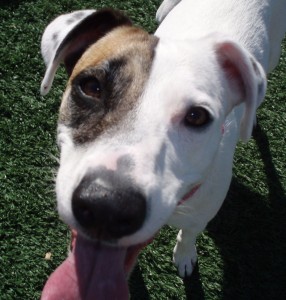Does the dog always have to wear the Sit Means Sit dog collar?
Training with a remote dog training collar like the Sit Means Sit dog training collar is really no different than training your dog with a leash or with treats. Reinforcement in any form is a required and necessary part of your dog’s life. Even after they are trained, it will still be necessary to maintain your rules and boundaries. This is really no different than we encounter with people learning to drive a car. Obtaining your driver’s license only shows that you understand the rules of the road, and have demonstrated your ability to operate a car safely. It does not guarantee that you will stop at every stop sign, and drive the speed limit all the time. Obviously there are a lot of factors that change as you drive, and some drivers are more honest than others. The bottom line however is that there are police officers responsible for maintaining the law and enforcing the rules that we have agreed to.
When looking at dog training from this standpoint, it easy to see how reinforcement of rules will be inevitable at some point. Every dog is different though, and some dogs require more or less reinforcement than others.
The good news is that proper and thorough training will result in your dog being more reliable even without training equipment or training ‘aids’ as we call them. Training your dog to be reliable without a Sit Means Sit dog training collar on is a matter of transferring attention through conditioning. There are three broad phases of training that you will encounter as you train your dog. Sticking with the your training and reinforcing your rules consistently over a long enough period of time will get your dog as reliable as they can be. The phases of training are as follows:
Phase 1: The Teaching/Control Phase ~ 6-12+ weeks
During phase one, the goal is to achieve control over your dog, teach them the rules, boundaries and desired behaviors you want. It also the time to teach the dog to pay attention and perform these commands around distractions. This phase lasts between 6-12 weeks on average, however in certain situations it may take longer to gain the reliability needed before moving on to phase number two. Once your dog is capable of performing commands quickly and reliably around a variety of distractions with minimal problem solving required, then your dog and you are ready to move on to phase number two.
Phase 2: The Reinforcement Phase ~ 6-12+ weeks
During phase number two, the goal is to begin phasing out your training aid (remote dog training collar). In phase number 1, we use the dog training collar on a regular basis to regain attention and maintain our rules. Now in phase two we begin to reduce our dependence on the dog training collar and introduce consistency via variable reinforcement. You may or may not need your dog training collar, but we want to teach the dog that you are still in control even if the perception of the dog is that you are not. This phase will last between 6 – 12 weeks on average, and again some situations will require you to stick with phase number two for longer than average. It’s also not uncommon as dogs mature and age to have to revert back into phase one training again for several weeks depending on how your dog’s performance and behavior is. When your dog is capable of performing commands without the need for reinforcement for approximately 6 weeks, then your dog is very likely to be reliable without their training aid present. We are ultimately looking to have your dog learn how to filter our distractions entirely. When this is achieved, your dog is much less likely to act out in an unwanted manner because of distractions.
Phase 3: The Maintenance Phase ~ Ongoing
The third and final phase of training a dog is the maintenance phase. During this phase, you will likely be using your dog training collar or other dog training aid very little as your dog is capable of ignoring distraction. The catch however is that they are still capable of distraction (they are not robots). A smart trainer recognizes this and is ready to maintain their rules, commands and boundaries at anytime. It is not uncommon to have a dog who sense the lack of maintenance and begins to revert back in their behavior. The benefit of having done your dog training properly to begin with is that regression is easily minimized and dealt with by simply jumping back into training for a short time to remind the dog of the expectations.
We have a number dog training videos that showcase dogs trained by Sit Means Sit working in environments event without a dog training collar on. Remember the goal is to have the dog’s learn to perform through constant reinforcement to condition them. By creating habit, you will have a dog that is capable of performing for an AKC Canine Good Citizen test, performing in a dog obedience trial, and perhaps even taking first place like this dog, or maybe even achieving a perfect score like this dog. Some people are not competitive with their dogs and just want to have fun in the park like this dog does.
